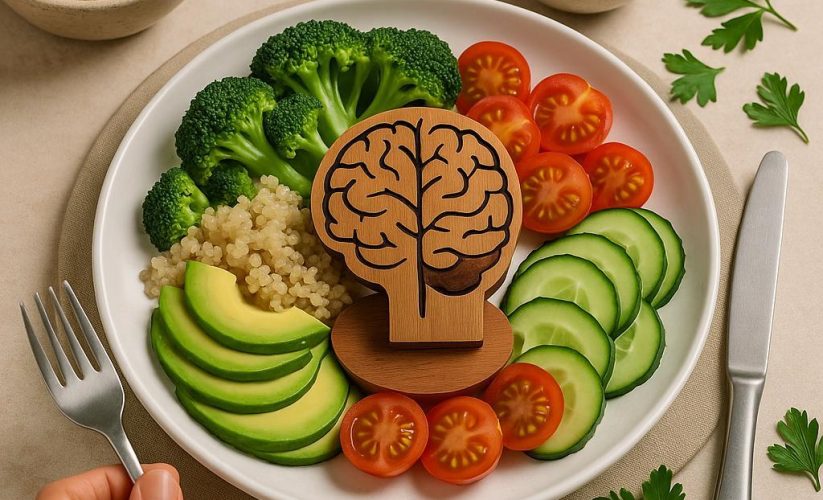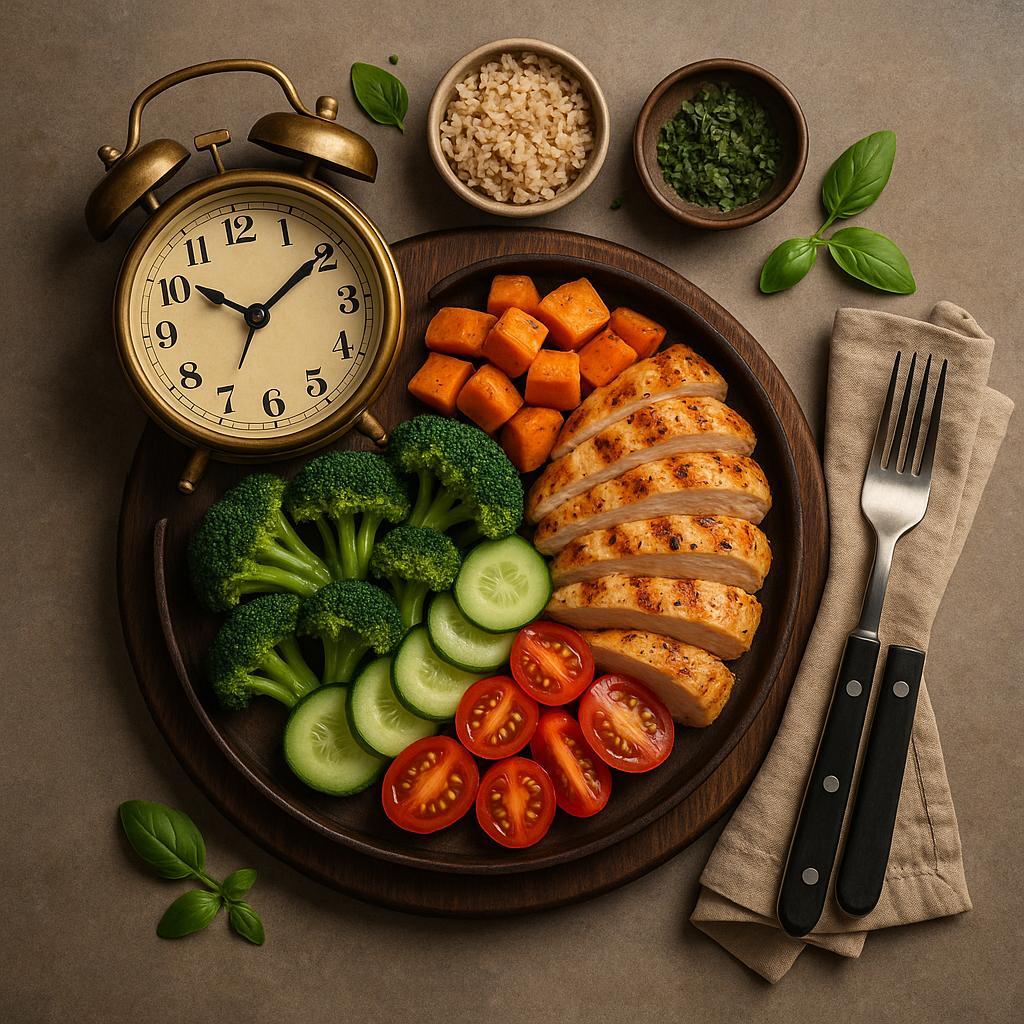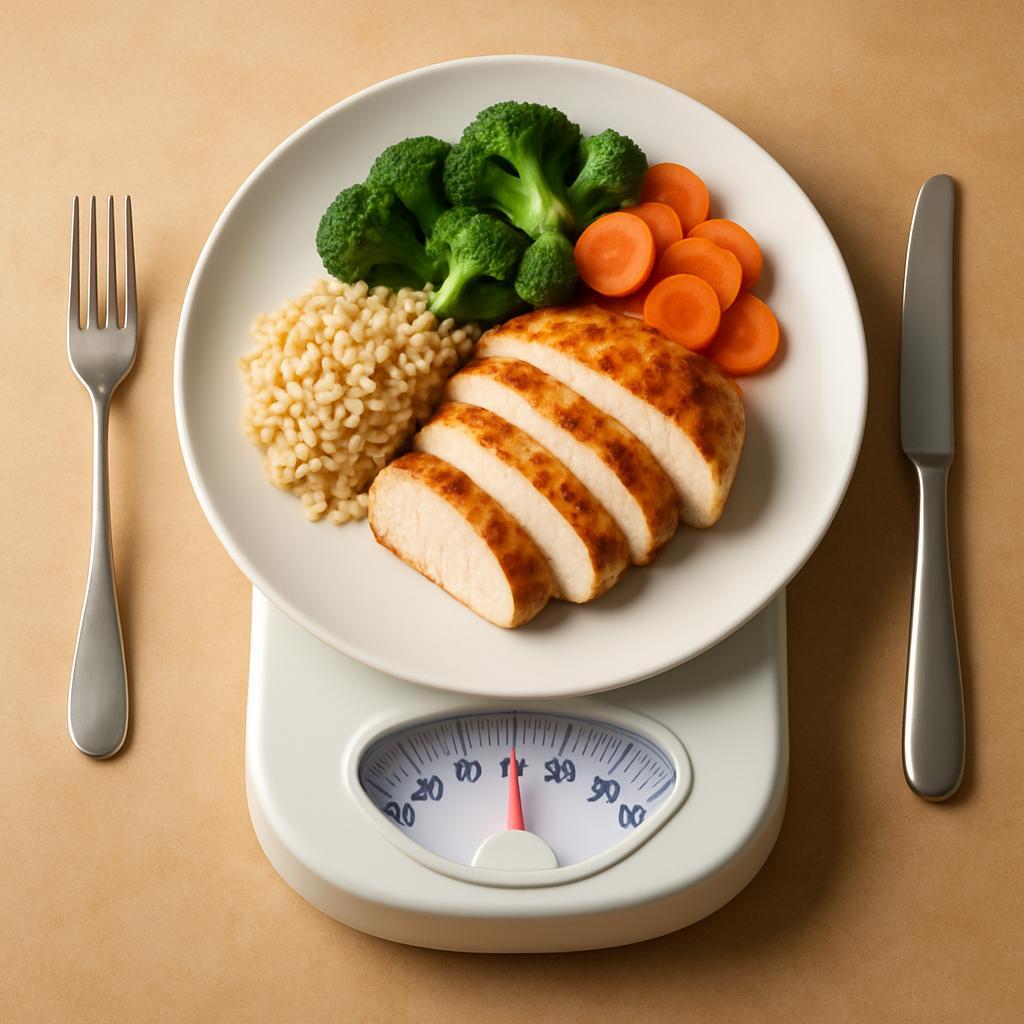Craving Control: A Science-Backed Mindful Meal Plan

Cravings aren’t a character flaw; they’re chemistry asking for attention. When appetite surges at 3 p.m. or late at night, it’s not sabotage-it’s a signal from your brain, gut, and blood sugar rhythms. The challenge isn’t to silence those signals, but to interpret them and respond in a way that steadies energy, supports mood, and keeps satisfaction on the table.
This article offers a science-backed, mindful meal plan designed to help you work with your biology rather than fight it. Think practical structure without rigidity, flavor without regret, and evidence-based tweaks that make hunger more predictable and choices less fraught. Whether you’re navigating stress, a packed schedule, or a sweet tooth that won’t quit, you’ll find a clear path to eating with intention-and feeling in control-without counting every bite.
Let’s translate cravings into cues and build a routine that actually holds.
Table of Contents
- Decode your hunger signals with research driven mindfulness
- Build a plate that tames cravings and keeps energy steady
- Rewire the craving habit loop with simple mindful cues
- Calm snack urges with satiety science you can practice today
- Q&A
- Key Takeaways
Decode your hunger signals with research driven mindfulness
Start by tuning into what your body-not your calendar or cravings-actually says. Take three slow breaths, then scan for location (hollow tug in the stomach vs. tension in the jaw), onset (gradual rise suggests physiological hunger; sudden spike leans emotional), and specificity (a single food “must-have” often signals mood or habit). Cross-check with time since your last protein-rich meal, hydration status, and energy level. Use a 0-10 scale: begin eating around 3-4 (early stomach cues, mild distraction) and stop near 6-7 (comfortably satisfied, not stuffed). Remember the 15-20 minute satiety lag while hormones like PYY and GLP-1 kick in-pace invites these signals to register. If a craving feels urgent, “surf” it for 7-10 minutes with a brief walk or warm tea; intensity often falls as ghrelin ebbs. When unsure, perform a flavor test: if plain yogurt or a boiled egg sounds unappealing but chips sound amazing, you’re likely feeding a feeling, not your cells.
Turn awareness into a plan you can run daily. Pre-meal, drink a glass of water and do a 30-second check-in; if you’re under 3, delay with a small protein-fiber bridge (like 10-15 g protein plus 5 g fiber). Build plates that reduce rebound hunger: 25-40 g protein, 8-12 g fiber, a fist of slow carbs, a thumb of healthy fats, and two fists of water-rich plants. Eat with a cadence-first 5 bites distraction-free, ~20 chews each, mid-meal pause at the halfway point to reassess the scale. Stop at 6-7 and set a closure cue (mint tea, a 2-minute stretch, or brushing teeth) to prevent grazing. Craving dessert? Apply “protein or produce first, then 15 minutes”; if the desire remains, choose a portioned sweet and savor it fully. Log two lines post-meal: “What hunger signal started this?” and “What hit satisfaction?” In a week, you’ll see patterns-food timing, textures, and environments that either amplify or calm appetite-turning guesswork into readable, reliable data from your own body.
Build a plate that tames cravings and keeps energy steady
Aim for the steady‑energy quartet each meal: 25-35 g protein, 8-12 g fiber, 30-45 g slow‑release carbs, and 10-20 g unsaturated fat. A simple blueprint is half your plate non‑starchy vegetables, a quarter lean protein, and a quarter intact carbs, plus a thumb‑sized pour of olive oil or a small handful of nuts/seeds. Choose chewy, intact textures (farro, barley, lentils, crunchy veg) to slow digestion; add acidity (1-2 tsp vinegar, citrus, fermented veg) to blunt glucose spikes; and front‑load the meal by eating veggies first, protein/fat next, starch last. Season generously with umami and bitter notes (miso, parmesan, tahini, arugula) to satisfy the palate without sugar. Keep drinks unsweetened and sip water before and during the meal, then give flavors “friction” by chewing thoroughly-both reduce the urge for seconds. Avoid “naked carbs”: pair any bread, fruit, or grains with protein and fat to curb rebound hunger.
Think in templates you can swap: Greek yogurt (200 g) or silken tofu with oats (1/3 cup), chia (1 tbsp), berries (1 cup), and walnuts (1 tbsp) for a creamy‑crunchy breakfast that hits protein, fiber, and healthy fats; a lunch bowl of grilled salmon or lentils (3/4-1 cup), a heap of mixed greens and roasted broccoli, quinoa (3/4 cup cooked), olive oil-lemon-tahini dressing, and a few olives for salty‑savory satisfaction; a dinner of tofu or chicken stir‑fried with shiitakes, peppers, and bok choy over brown rice (1/2-3/4 cup), finished with rice‑vinegar and sesame oil. For snack insurance that prevents pantry raids, pair produce with protein/fat-an apple with peanut butter, edamame with sea salt, or carrots with hummus. Build plates this way for a steady glucose curve, longer satiety, and fewer “I need something sweet” moments.
Rewire the craving habit loop with simple mindful cues
Habits run on cues → routines → rewards, so give your brain a new script right where cravings start. Plant “micro-cues” at the trigger: a colored sticker on the fridge handle that means Drink-Delay-Decide (2 minutes); a pre-lunch phone chime labeled HALT scan (Hungry, Anxious, Lonely, Tired?); a desktop note: Name it to tame it (label the urge: “salty, 7/10, belly”). During the delay, use a 90‑second urge surf: breathe with a long exhale, notice where the craving lives in the body, and watch it rise and fall-cravings often crest quickly when not fed. Make the environment do half the work: fruit at eye level, indulgences in opaque containers on a high shelf, water bottle within reach, and a post‑dinner “kitchen closed” cue (peppermint tea + teeth brushing). These tweaks shift attention and prediction, reducing the automatic dopamine pull without relying on willpower.
Fold cues into meals so satiety signals win. Before the first bite, run the 5‑S savor: see, sniff, sip, slow, savor; then take protein‑first bites and set a fork‑down rhythm to give fullness hormones time to register. Pre‑portion snacks you truly enjoy and schedule them (e.g., noon and 4 pm); outside those windows, default to Drink-Delay-Decide. Keep a pocket if‑then card: “If stress spikes, then box‑breathe 4‑4‑4‑4 and walk 60 seconds.” Color‑code storage-green (front/clear) for vegetables and berries, yellow (middle) for planned snacks, red (opaque/back) for treats-to make the desired choice the easiest. Close the loop with a micro‑reward after each successful pivot (tick a streak, step into sunlight, favorite song). With repetition, your brain updates its predictions: the cue prompts calm and nourishment, and the old craving routine loses its grip.
Calm snack urges with satiety science you can practice today
Turn down cravings by designing meals that stretch fullness signals. Aim for 25-35 g protein per meal to trigger PYY, GLP‑1, and CCK-hormones that blunt snack urges. Layer in viscous fiber (oats, barley beta‑glucan, chia, psyllium) with plenty of water to slow gastric emptying and create a gel-like “staying power.” Favor low energy density: broth-based soups, leafy salads, high‑water fruits and vegetables, and pulses (beans, lentils) that also feed satiety‑supporting SCFAs. Preload with 500 ml water or a light soup 15-20 minutes before meals and let the natural 20‑minute fullness lag work-pause mid‑meal, breathe, reassess hunger. Add small amounts of healthy fat (olive oil, nuts) for mouthfeel and steadier appetite, and a splash of acid (lemon or vinegar) to temper post‑meal dips that provoke raids on the pantry. Crunch and aroma matter: chewy, crisp textures and warm spices increase sensory satisfaction, while ultra‑soft, highly processed foods make overeating effortless.
Put it into practice today: Breakfast-Greek yogurt or eggs with berries and oats; stir in 1 tsp chia or a pinch of psyllium, and drink 500 ml water or tea. If a mid‑morning urge appears, delay 10 minutes, sip water, then choose a protein‑forward bite (200 g cottage cheese with cucumber; a boiled egg and an apple; 3 cups air‑popped popcorn plus 10-12 almonds). Lunch-preload with miso or vegetable soup; build a plate that’s half vegetables, 4-6 oz protein (tofu, chicken, tuna, tempeh), a scoop of beans or quinoa, and a vinegar‑based dressing. Afternoon-anticipate danger windows: mix 1 tsp psyllium into yogurt or take a quick walk and mint tea; brushing your teeth can reset flavor cravings. Dinner-stir‑fry a heap of veg with 4-6 oz protein; add cooled‑then‑reheated potatoes or rice for resistant starch; finish with a square of 80-90% dark chocolate and a pear. Keep a 1‑liter bottle visible, batch‑prep crunchy veg, and stash trigger snacks out of sight-environment design makes satiety strategy automatic.
Q&A
What does a science-backed mindful meal plan look like across a typical day?
Begin with water (12-16 oz) and 5 slow breaths; eat breakfast within 1-3 hours built around 25-35 g protein, 8-10 g fiber, and a small amount of healthy fat (e.g., eggs with spinach and avocado on whole-grain toast, or skyr with berries, chia, and walnuts). Before each meal, drink a glass of water 15-30 minutes prior, pause for 3 breaths, and notice aroma and hunger level. Lunch follows the plate method-half non-starchy vegetables, a palm of protein, a fist of slow carbs, a thumb of healthy fat (olive oil, nuts). For an afternoon bridge, choose protein + produce (Greek yogurt with cinnamon, apple with peanut butter, edamame). Dinner emphasizes lean protein, 2 cups colorful veg, and modest slow carbs if active (salmon, roasted broccoli, quinoa) or extra veg if not. Close the kitchen with a mint tea or a square of 70% chocolate, brush teeth, and do a quick 2-minute “fullness and mood” check to discourage grazing.
Which nutrients and portions actually blunt cravings, and how much do I need?
Prioritize protein at 1.2-1.6 g/kg body weight per day (25-35 g per meal) to boost satiety hormones (GLP‑1, PYY) and reduce ghrelin; aim for 30-40 g fiber daily (8-10 g per meal) from vegetables, legumes, berries, oats, and seeds to slow digestion and stabilize glucose; include 10-20 g of healthy fats per meal (olive oil, nuts, avocado, omega‑3‑rich fish) to extend fullness; choose low‑glycemic carbs in modest portions (about a fist per meal, or 20-40 g if carb‑sensitive) and pair with protein/fat to reduce glucose swings; hydrate at ~30-35 ml/kg/day and consider 500 ml water before meals, which has been shown to reduce intake; protect sleep (7-9 hours) and manage stress, as both strongly modulate hunger and reward pathways.
I’m slammed for time-what quick mindfulness practices actually work at meals?
Use S.T.O.P.: Stop, Take one slow breath, Observe hunger/fullness (0-10) and emotions, Proceed with intention; try the 5‑5‑5 breath (inhale 5, hold 5, exhale 5) to switch off autopilot; commit to a utensil‑down pause every 3-4 bites to check taste and fullness and to chew each bite 10-15 times; set a 10‑minute timer to eat unhurriedly for the first half of the meal, then reassess hunger before finishing; when a craving hits, “urge surf” for 90 seconds-notice where it lives in the body without reacting-then decide if you still want it, and plate it if yes.
How can I stop afternoon sugar cravings without feeling deprived?
Front‑load lunch with 30-35 g protein, 8-10 g fiber, and 15 g healthy fat (e.g., chicken-chickpea salad with olive oil and a big veg base) to flatten the 3-5 p.m. dip; add a planned “sweet spot” right after lunch (a piece of fruit or 15-25 g dark chocolate) so dessert competes with a full stomach; take a 10‑minute brisk walk or do 20 air squats to nudge glucose into muscles; sip cinnamon or peppermint tea and hydrate with electrolytes if you’ve been sweating; if truly hungry, use a balanced snack (e.g., cottage cheese with berries, apple + 1 tbsp peanut butter, tuna on cucumber slices); set an if/then plan: “If I crave candy at 3:30, then I’ll have yogurt with cocoa and do a 5‑minute walk first.”
How do I adapt this plan for vegetarian, low‑carb, or gluten‑free eating?
Vegetarian: anchor meals with tofu, tempeh, eggs, Greek yogurt, cottage cheese, seitan, or a pea/whey protein smoothie; pair legumes with a protein booster (edamame + tofu, lentil salad + feta) to hit 25-35 g protein. Low‑carb: double non‑starchy veg, keep protein steady, and swap slow carbs for extra veg and fats (cauliflower rice, zucchini noodles, olive oil, avocado); consider berries or yogurt as carb sources if desired. Gluten‑free: choose quinoa, buckwheat, certified GF oats, potatoes, and legumes for carbs; focus on naturally GF proteins and fats. In all cases, keep the satiety trifecta-protein, fiber, fat-at each meal.
How can I measure progress without counting calories?
Track a simple daily craving log: time, trigger, intensity (0-10), what you did, and outcome; aim for 3-4 hours comfortable satiety after meals and fewer than two unplanned snacks per day; note afternoon energy (steady vs. crash) and sleep quality; measure waist or a snug garment fit weekly; count “mindful reps” (breath pause before meals, utensil‑down checks). If cravings stay above 6/10 for a week, increase protein by 10 g per meal or fiber by 5 g per day, adjust sleep or stress load, and reassess for seven days.
Key Takeaways
You’ve learned that cravings are signals, not commands-and that biology and attention can work together. By plating for satiety (protein, fiber, healthy fats), keeping steady meal rhythms, noticing your triggers, and adding a brief pause before you eat, you replace willpower battles with calmer, smarter choices. The win isn’t perfection; it’s repeatable, low‑friction habits that make the next good decision easier than the last.
Take one simple step now: at your next meal, pause for 30 seconds, name what you’re craving, and build a balanced plate you can enjoy. Then notice how you feel two hours later. With a little curiosity and consistency, your routine-not your cravings-sets the tone.












